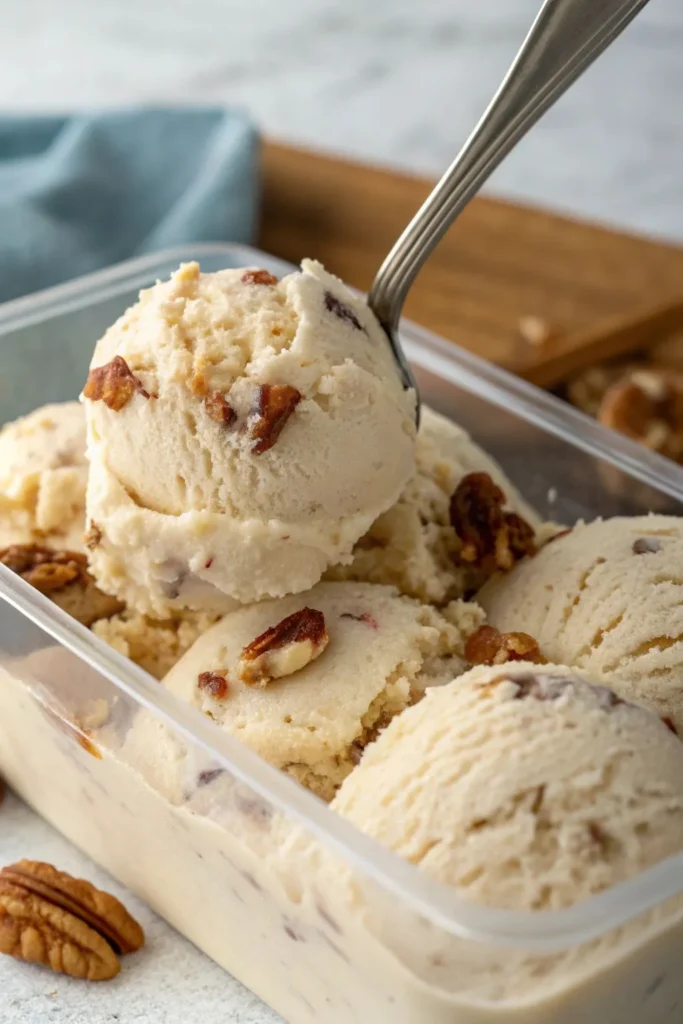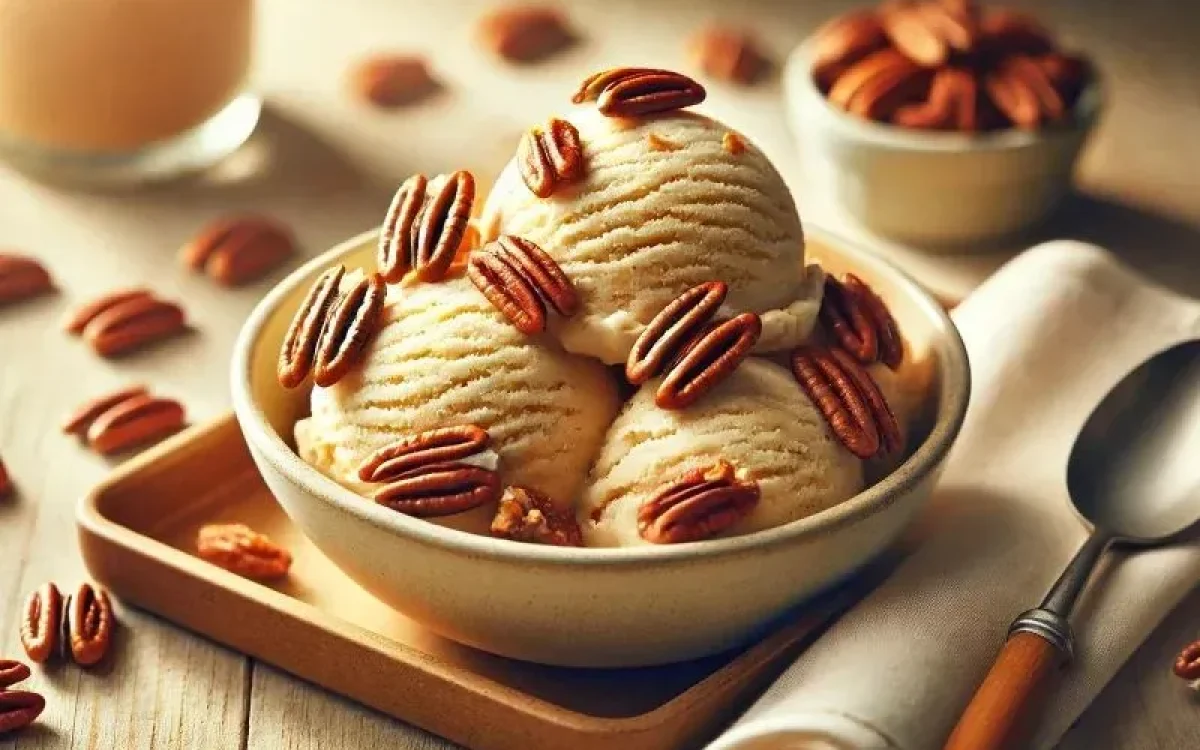Discover Amazing Mix-ins That Transform Your Frozen Treats Into Incredible Desserts
Ninja Creami recipes Finding the perfect mix-in for your ninja creami adventures can transform ordinary frozen bases into extraordinary desserts that rival premium ice cream shops. Whether you’re creating classic vanilla ice cream recipes or experimenting with innovative flavor combinations, the right mix-ins make all the difference between mediocre frozen treats and spectacular creations that leave everyone craving more.
The world of creami recipes has exploded with creativity as home cooks discover the endless possibilities that come with strategic mix-in selection. From crunchy cookie pieces that add delightful texture contrasts to rich chocolate chips that create pockets of indulgence, understanding which mix-ins work best in different scenarios will elevate your frozen dessert game to professional levels.
This comprehensive guide explores the science behind successful mix-ins, reveals insider secrets for achieving perfect texture and flavor distribution, and provides detailed recommendations for creating show-stopping frozen desserts that will impress family and friends. According to food scientists at the University of California Davis, the key to successful frozen dessert mix-ins lies in understanding how different ingredients behave at freezing temperatures and during the churning process.
Understanding the Science Behind Perfect Mix-ins
The success of any ninja creami creation depends heavily on understanding how different ingredients interact with your frozen base during the processing cycle. Unlike traditional ice cream makers that churn ingredients while freezing, the Ninja Creami works by processing already-frozen bases, which creates unique opportunities and challenges for incorporating mix-ins effectively.
How the Ninja Creami Processing Affects Mix-ins
The Ninja Creami’s powerful blade system processes frozen bases at high speeds, which means mix-ins must be carefully selected based on their ability to withstand this intensive processing without becoming pulverized or creating undesirable textures. Research from the Institute of Food Technologists shows that successful frozen dessert mix-ins need to maintain structural integrity while complementing the base’s flavor profile.

Different types of mix-ins behave uniquely during processing:
- Hard mix-ins like chocolate chips or nuts can become too small if processed extensively
- Soft mix-ins such as cookie dough pieces may distribute unevenly throughout the mixture
- Liquid mix-ins including syrups or extracts require careful timing to prevent separation
- Frozen mix-ins like fruit pieces need proper preparation to avoid creating icy chunks
Related: Essential Ninja Creami Base Preparation Techniques
Temperature Considerations for Mix-in Success
Temperature plays a crucial role in mix-in performance. The National Institute of Standards and Technology has documented how different materials behave at various temperatures, and this knowledge directly applies to frozen dessert creation. Understanding these principles helps predict how mix-ins will perform during processing and storage.
Ideal mix-in temperatures vary by ingredient type:
- Room temperature mix-ins often incorporate most smoothly
- Slightly chilled ingredients can prevent melting during processing
- Frozen mix-ins may require pre-processing to achieve optimal size
- Temperature-sensitive ingredients need special handling techniques
Categories of Outstanding Mix-ins for Creami Recipes
Successful creami recipes often feature mix-ins that fall into specific categories, each offering unique benefits and considerations for achieving optimal results.
Chocolate-Based Mix-ins
Chocolate remains the most popular mix-in category for good reason. The variety of chocolate options provides endless creativity opportunities while offering reliable results across different base flavors.
Premium Chocolate Chips and Chunks
High-quality chocolate pieces create luxurious pockets of flavor throughout your frozen desserts:
- Mini chocolate chips distribute evenly and maintain their shape during processing
- Chocolate chunks provide satisfying texture contrasts and rich flavor bursts
- White chocolate pieces offer sweetness and visual appeal in darker bases
- Dark chocolate options add sophisticated depth to sweeter base flavors
- Flavored chocolate chips like peppermint or orange create unique flavor combinations
Chocolate Sauce and Syrup Integration
Liquid chocolate mix-ins require special techniques but create incredible marbled effects:
- Add chocolate sauce during the final processing minutes to create swirls
- Use high-quality chocolate syrups for consistent flavor distribution
- Consider temperature differences between base and chocolate additions
- Experiment with timing to achieve desired marbling patterns
See Also: Advanced Chocolate Integration Techniques
Fruit-Based Mix-ins That Deliver Results
Fresh and processed fruits offer natural sweetness, vibrant colors, and nutritional benefits to ice cream recipes. However, fruit mix-ins present unique challenges due to their water content and varying textures.
Fresh Fruit Preparation Methods
Proper fruit preparation ensures optimal results:
- Strawberries should be hulled, chopped, and lightly macerated with sugar
- Blueberries work best when slightly crushed to release juices
- Bananas require freezing before chopping to prevent mushiness
- Peaches benefit from peeling and pre-freezing to maintain texture
- Berries generally should be partially thawed before incorporation
Dried and Freeze-Dried Fruit Options

Processed fruits often perform better than fresh alternatives:
- Freeze-dried fruits rehydrate during processing while maintaining intense flavors
- Dried fruits like cranberries or cherries add chewy textures and concentrated taste
- Fruit leather pieces create interesting textural elements
- Candied fruits provide sweetness and visual appeal
Cookie and Baked Goods Mix-ins
Incorporating baked goods into ninja creami creations requires understanding how different textures behave during processing. The key lies in selecting items that maintain some structural integrity while complementing the base flavors.
Optimal Cookie Types for Creami Processing
Not all cookies work equally well as mix-ins:
- Oreo cookies remain the gold standard, maintaining texture while adding flavor
- Graham crackers create interesting textural contrasts in s’mores-inspired flavors
- Shortbread cookies provide buttery richness and pleasant crunch
- Gingersnap cookies offer spice and texture for holiday-themed creations
- Homemade cookie pieces allow complete control over size and texture
Preparation Techniques for Baked Goods
Proper preparation maximizes mix-in effectiveness:
- Break cookies into quarter-sized pieces for optimal distribution
- Freeze cookie pieces briefly to prevent excessive breakdown during processing
- Consider removing cream fillings from sandwich cookies for better texture
- Store prepared cookie mix-ins in airtight containers to maintain freshness
Internal Link: Cookie Mix-in Storage and Preparation Guide
Nuts and Seeds: Adding Crunch and Nutrition
Nuts and seeds provide protein, healthy fats, and satisfying crunch to frozen desserts. However, their density and hardness require careful consideration during incorporation.
Popular Nut Options for Creami Recipes
Different nuts offer unique flavor profiles and textures:
- Almonds provide mild flavor and excellent crunch when chopped appropriately
- Pecans offer rich, buttery taste that complements vanilla and caramel bases
- Walnuts contribute slightly bitter notes that balance sweet base flavors
- Pistachios add distinctive flavor and attractive color to finished products
- Hazelnuts create luxurious combinations, especially with chocolate bases
Preparation Methods for Optimal Results
Nut preparation significantly impacts final texture and flavor:
- Lightly toast nuts before chopping to enhance flavors
- Chop nuts to uniform sizes for consistent distribution
- Consider coating nuts lightly with oil to prevent excessive freezing
- Store prepared nuts properly to maintain freshness and prevent rancidity
Candy and Confection Mix-ins
Incorporating candies and confections adds playful elements and familiar flavors to homemade frozen desserts. Understanding how different candy types behave during processing ensures successful integration.
Hard Candy Considerations
Hard candies require special handling techniques:
- Crush hard candies to appropriate sizes before incorporation
- Consider how candy flavors will complement base ingredients
- Account for additional sweetness when formulating recipes
- Monitor processing time to prevent candy from becoming too small
Soft Candy Integration
Soft candies often incorporate more easily but present different challenges:
- Caramel pieces create delightful pockets of flavor when properly sized
- Marshmallows should be mini-sized or chopped for even distribution
- Gummy candies may require freezing before chopping to maintain shape
- Chocolate-covered candies offer multiple flavor and texture elements
Related Reading: Candy Storage and Preparation Best Practices
Sauce and Syrup Mix-ins for Gourmet Results
Liquid mix-ins create beautiful swirls and intense flavor pockets when incorporated correctly. The Culinary Institute of America emphasizes that successful sauce integration requires understanding viscosity and temperature relationships.
Timing Strategies for Sauce Integration
Successful sauce incorporation depends heavily on timing:
- Add thick sauces during final processing minutes to create distinct swirls
- Incorporate thin syrups gradually to prevent separation
- Consider base temperature when adding room temperature sauces
- Monitor consistency to achieve desired marbling effects
Popular Sauce Options
Different sauces offer unique benefits:
- Caramel sauce provides rich sweetness and attractive golden swirls
- Hot fudge creates indulgent chocolate ribbons throughout the dessert
- Fruit sauces add natural flavors and vibrant colors
- Nut butters contribute protein and distinctive taste profiles
- Flavored syrups offer concentrated tastes without textural complications
Advanced Mix-in Combination Strategies
Creating exceptional creami recipes often involves combining multiple mix-ins strategically to achieve complex flavor profiles and interesting textures. Understanding how different ingredients interact helps predict successful combinations.
Flavor Pairing Principles
Successful flavor combinations follow established culinary principles:
- Complement similar flavors to create depth (vanilla base with caramel and pecans)
- Contrast opposing flavors for complexity (chocolate base with mint and nuts)
- Balance sweet and salty elements for sophisticated taste profiles
- Consider seasonal associations for themed creations
Texture Layering Techniques
Combining different textures creates more interesting eating experiences:
- Pair crunchy elements with smooth base textures
- Include both small and larger mix-in pieces for variety
- Balance dense mix-ins with lighter options
- Consider how textures change during storage and serving
See Also: Seasonal Mix-in Combinations
Seasonal Mix-in Ideas and Combinations
Adapting ice cream recipes to reflect seasonal ingredients and flavors keeps your frozen dessert repertoire fresh and exciting throughout the year.
Spring and Summer Combinations
Warmer months inspire lighter, fresher mix-in combinations:
- Strawberry basil with fresh strawberry pieces and basil-infused base
- Lemon blueberry featuring candied lemon peel and fresh blueberries
- Peach cobbler incorporating graham cracker pieces and peach chunks
- Mint chocolate chip using fresh mint and high-quality chocolate chips
- Key lime pie with graham cracker crust pieces and lime zest
Fall and Winter Inspirations
Cooler months call for warming spices and comfort food flavors:
- Apple pie combinations with cinnamon graham crackers and apple pieces
- Pumpkin spice featuring candied pecans and warm spice blends
- Hot chocolate mix-ins including marshmallows and chocolate chunks
- Gingerbread with molasses cookies and crystallized ginger
- Eggnog combinations incorporating nutmeg and rum-soaked raisins
Troubleshooting Common Mix-in Problems
Even experienced ninja creami users encounter occasional challenges with mix-in incorporation. Understanding common problems and their solutions helps achieve consistent results.
Preventing Mix-in Clumping
Clumping occurs when mix-ins don’t distribute evenly throughout the base:
- Ensure mix-ins are properly sized for even distribution
- Add mix-ins gradually during processing rather than all at once
- Consider coating sticky mix-ins lightly with cornstarch or powdered sugar
- Monitor base consistency to ensure proper incorporation conditions
Avoiding Texture Issues
Texture problems can significantly impact the final product quality:
- Process mix-ins to appropriate sizes before incorporation
- Balance hard and soft mix-ins to prevent textural monotony
- Consider how storage affects mix-in textures over time
- Adjust processing time based on mix-in hardness and density
Managing Flavor Distribution
Uneven flavor distribution creates disappointing results:
- Incorporate flavored mix-ins throughout the processing cycle
- Consider the intensity of different mix-in flavors when combining
- Balance strong flavors with neutral base ingredients
- Test small batches before committing to full recipes
Internal Link: Mix-in Troubleshooting Quick Reference Guide
Storage and Serving Considerations
Proper storage and serving techniques ensure that carefully crafted mix-ins maintain their intended texture and flavor characteristics.
Optimal Storage Conditions
Different mix-ins have varying storage requirements:
- Store finished products in airtight containers to prevent freezer burn
- Consider how different mix-ins affect overall storage stability
- Monitor texture changes during storage periods
- Plan consumption timing based on mix-in characteristics
Serving Temperature Guidelines
Serving temperature significantly affects mix-in perception:
- Allow products to soften slightly for optimal texture appreciation
- Consider how serving temperature affects different mix-in types
- Plan serving timing to maximize flavor and texture impact
- Educate guests about optimal serving conditions
Budget-Friendly Mix-in Options
Creating exceptional creami recipes doesn’t require expensive ingredients. Many budget-friendly options deliver outstanding results while keeping costs manageable.
Affordable Ingredient Alternatives
Cost-effective mix-ins that deliver premium results:
- Store-brand chocolate chips often perform as well as premium options
- Seasonal fruit purchases when ingredients are at peak availability
- Homemade cookie pieces from scratch baking projects
- Bulk nut purchases for better per-unit pricing
- Generic candy options for casual family desserts
Maximizing Ingredient Value
Strategic purchasing and preparation maximize ingredient investment:
- Buy mix-ins in appropriate quantities to prevent waste
- Store ingredients properly to maintain freshness and quality
- Consider multi-use ingredients that work in various recipes
- Plan recipes around available seasonal ingredients
- Share bulk purchases with friends or family members
Health-Conscious Mix-in Alternatives
Modern ice cream recipes can accommodate various dietary preferences and health considerations without sacrificing flavor or enjoyment.
Natural Sweetener Options
Alternative sweeteners can reduce sugar content while maintaining sweetness:
- Fresh fruit pieces provide natural sugars and nutritional benefits
- Date pieces offer concentrated sweetness with fiber benefits
- Stevia-sweetened chocolate chips reduce overall sugar content
- Monk fruit sweetened options provide sweetness without calories
- Sugar-free candy pieces allow indulgence with reduced sugar impact
Protein-Rich Mix-in Ideas
Adding protein to frozen desserts supports nutritional goals:
- Chopped nuts provide healthy fats and protein
- Protein powder integration boosts nutritional content
- Greek yogurt-based additions increase protein while adding creaminess
- Nut butter swirls contribute protein and healthy fats
- Seeds like chia or hemp add protein and omega fatty acids
Related: Nutritional Benefits of Common Mix-ins
Professional Tips from Culinary Experts
Industry professionals and experienced home cooks have developed techniques that consistently produce superior results with ninja creami mix-ins.
Temperature Management Strategies
Professional bakers understand that temperature control affects every aspect of mix-in success:
- Bring cold mix-ins to appropriate temperatures before incorporation
- Consider how ambient temperature affects processing conditions
- Plan timing around kitchen temperature fluctuations
- Use temperature monitoring tools for consistent results
Preparation Timing Optimization
Efficient preparation sequences improve overall results:
- Prepare mix-ins while bases are freezing to save time
- Organize ingredients in order of incorporation
- Pre-measure all components for streamlined processing
- Clean equipment between different mix-in types to prevent flavor transfer
Quality Control Measures
Professional approaches to quality assurance:
- Taste-test mix-ins before incorporation to ensure quality
- Monitor processing sounds and visual cues during operation
- Document successful combinations for future reference
- Adjust recipes based on seasonal ingredient variations
Creative Mix-in Inspiration from Around the World
International flavor profiles offer exciting opportunities for unique creami recipes that transport taste buds to different cultures and culinary traditions.
Asian-Inspired Combinations
Eastern flavors create intriguing frozen dessert experiences:
- Matcha and white chocolate for sophisticated Japanese-inspired treats
- Sesame and honey combinations reflecting Korean dessert traditions
- Coconut and mango pieces for tropical Southeast Asian flavors
- Red bean paste swirls for authentic Asian dessert experiences
- Lychee and rose combinations for delicate floral notes
European Flavor Profiles
Continental European inspirations offer rich, complex combinations:
- Lavender and honey reflecting French Provence influences
- Tiramisu-inspired combinations with coffee and mascarpone elements
- German chocolate cake mix-ins with coconut and pecans
- Italian gelato combinations featuring fresh fruit and herbs
- British trifle elements including cake pieces and fruit preserves
Latin American Influences
Vibrant Latin flavors create exciting mix-in possibilities:
- Dulce de leche swirls with toasted coconut pieces
- Tres leches inspired combinations with cake and cream elements
- Chili chocolate combinations for sophisticated heat
- Tropical fruit medleys reflecting Caribbean influences
- Horchata inspired mixes with cinnamon and rice elements
Frequently Asked Questions About Ninja Creami Mix-ins
What size should mix-ins be for optimal results?
Mix-ins should generally be sized between 1/4 inch to 1/2 inch for optimal distribution and texture. Smaller pieces may get pulverized during processing, while larger pieces can create uneven distribution throughout the frozen dessert. The ninja creami works best when mix-ins are uniform in size and properly prepared before incorporation.
Can I add mix-ins to any base recipe?
Most creami recipes can accommodate mix-ins, but success depends on base consistency and mix-in compatibility. Thicker, more stable bases generally handle mix-ins better than thinner formulations. Consider how mix-in flavors will complement the base, and adjust sweetness levels accordingly when adding sweet mix-ins to already sweetened bases.
When should I add mix-ins during the processing cycle?
Timing varies by mix-in type, but most solid mix-ins should be added during the final 30-60 seconds of processing to prevent over-chopping. Liquid mix-ins like sauces work best when added during the last few pulses to create swirl effects. Delicate mix-ins require minimal processing time to maintain their intended texture and appearance.
How do I prevent mix-ins from sinking to the bottom?
Mix-in sinking occurs when density differences cause heavier ingredients to settle. Prevent this by ensuring proper base consistency, adding mix-ins gradually during processing, and considering the density of different ingredients. Coating dense mix-ins lightly with cornstarch can help them stay suspended throughout the mixture.
Can I use frozen mix-ins directly from the freezer?
Frozen mix-ins can be used directly, but results vary by ingredient type. Hard frozen items like chocolate chips work well, while soft frozen ingredients may need partial thawing to prevent creating icy chunks. Consider letting frozen mix-ins sit at room temperature for 5-10 minutes before incorporation for optimal results.
What’s the maximum amount of mix-ins I can add?
Generally, mix-ins should comprise no more than 20-25% of the total volume to maintain proper texture and processing performance. Too many mix-ins can prevent proper base processing and create uneven textures. Start with smaller amounts and gradually increase based on your preferences and the specific ice cream recipes you’re using.
Are there any mix-ins I should avoid completely?
Avoid extremely hard items that could damage the machine, very liquidy ingredients that might prevent proper processing, and anything with sharp edges that could affect blade performance. Items with high water content may create ice crystals, while overly sticky ingredients can clump together and distribute unevenly throughout the finished product.
Advanced Techniques for Mix-in Mastery
Experienced ninja creami users develop sophisticated techniques that elevate their frozen dessert creations beyond basic mix-in incorporation.
Layering Strategies for Complex Flavors
Creating layers of different mix-ins throughout the processing cycle produces more complex flavor experiences:
- Start with base-compatible mix-ins during initial processing
- Add contrasting flavors during mid-processing for distinct layers
- Finish with delicate mix-ins that require minimal processing time
- Consider how different layers will appear when served
Pre-processing Mix-in Preparation
Advanced preparation techniques improve final results:
- Partially process some mix-ins separately before adding to main base
- Create custom mix-in blends that complement specific base flavors
- Prepare mix-ins in matching flavor profiles for cohesive results
- Consider texture contrasts when planning mix-in combinations
Temperature Manipulation for Optimal Results
Understanding temperature relationships allows for better control:
- Chill certain mix-ins to prevent melting during incorporation
- Warm others slightly to improve distribution characteristics
- Consider ambient temperature effects on processing outcomes
- Plan incorporation timing around temperature optimization
Internal Link: Advanced Processing Techniques Guide
The Future of Mix-in Innovation
The creami recipes landscape continues evolving as creative home cooks experiment with new ingredients and techniques, pushing the boundaries of what’s possible with frozen dessert creation.
Emerging Ingredient Trends
New ingredients entering the mix-in landscape:
- Superfood additions like acai berry pieces and chia seeds
- International candies from global markets offering unique flavors
- Artisanal chocolate options with complex flavor profiles
- Plant-based alternatives for traditional dairy-based mix-ins
- Probiotic elements that add health benefits alongside flavor
Technology Integration
Modern kitchen technology enhances mix-in possibilities:
- Precision temperature control for optimal ingredient handling
- Digital scales for consistent mix-in proportioning
- Food processors for custom mix-in preparation
- Vacuum sealing for extended mix-in storage
- Smart kitchen devices that automate timing and measurements
Conclusion
Mastering the art of ninja creami mix-ins transforms ordinary frozen bases into extraordinary desserts that rival premium ice cream shop offerings. The key lies in understanding how different ingredients behave during processing, selecting appropriate sizes and combinations, and timing incorporation for optimal results.
From classic chocolate chips that create pockets of indulgence to sophisticated international flavor combinations that transport taste buds around the world, the possibilities are truly limitless. The science behind successful mix-in integration, combined with creative inspiration and proper preparation techniques, ensures consistent results that will impress family and friends.
Remember that the best ice cream recipes often emerge from experimentation and personalization. Start with proven combinations, then gradually develop your own signature creations based on your preferences and seasonal ingredient availability. Document successful experiments, learn from less successful attempts, and continue pushing the boundaries of what’s possible with your creami recipes.
Explore More: Seasonal Recipe Collections | Base Preparation Mastery | Troubleshooting Guide
The journey toward mix-in mastery is ongoing, with each creation offering opportunities to learn, improve, and innovate. Whether you’re crafting simple family favorites or sophisticated gourmet creations, the principles and techniques outlined in this guide provide the foundation for consistent success. Share your discoveries with fellow frozen dessert enthusiasts, and continue exploring the endless possibilities that await in your ninja creami adventures.
Start experimenting today with these proven techniques and recommendations. Your perfect mix-in combination is waiting to be discovered, and the journey toward that discovery promises to be delicious every step of the way!







